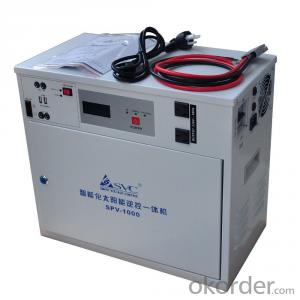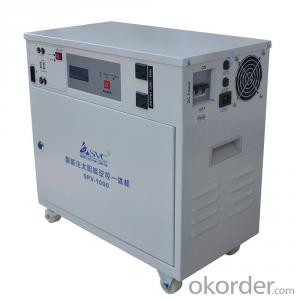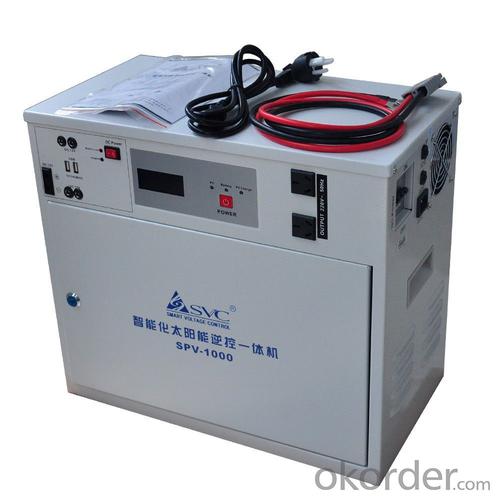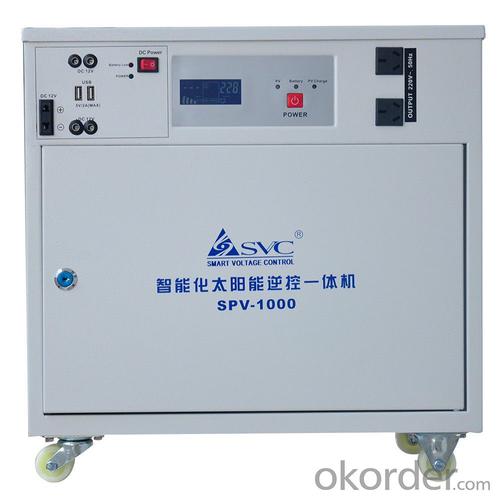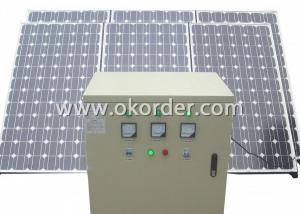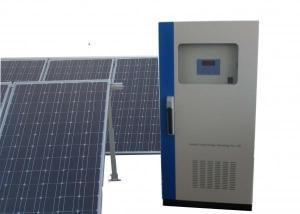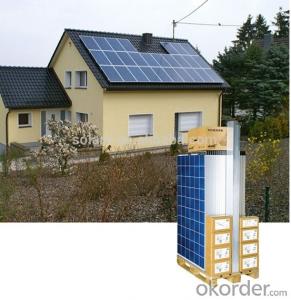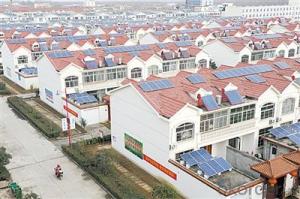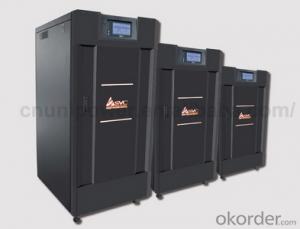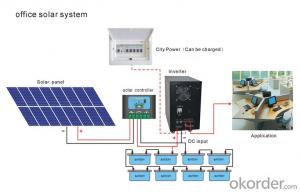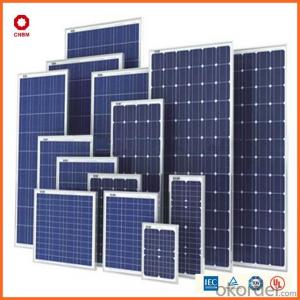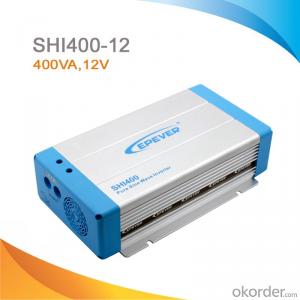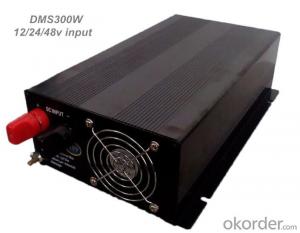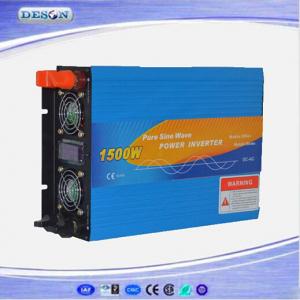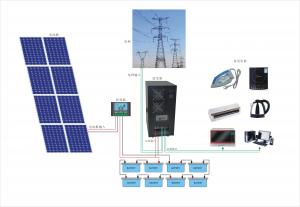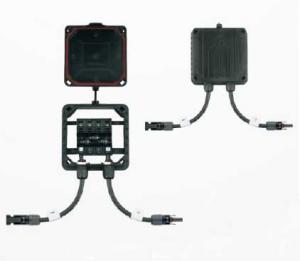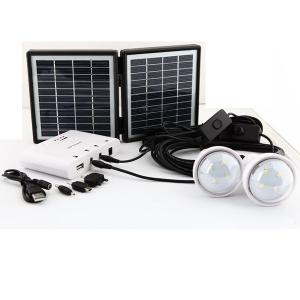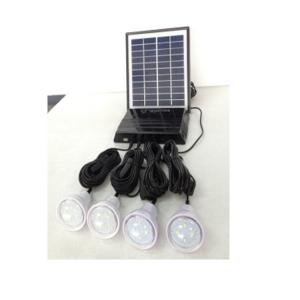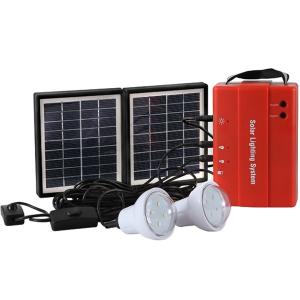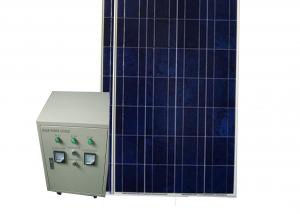Huawei Solar Energy Systems - All-in-One 480W Pure Sine Wave AC/DC Output LCD/LED 12V/24V Solar Power System
- Loading Port:
- China main port
- Payment Terms:
- TT OR LC
- Min Order Qty:
- 20 carton
- Supply Capability:
- 10000 carton/month
OKorder Service Pledge
OKorder Financial Service
You Might Also Like
ALL-IN-ONE 480W Pure Sine Wave AC/DC Output LCD/LED 12V/24V Solar Power System

| Model | SPV-600 | SPV-800 | SPV-1000 | SPV-1500 | |
| Rated power: | 360W | 480W | 600W | 1000W | |
| storage battery: | 12V(optional:24V) | ||||
| specifications of charging | |||||
| charging mode | PV charging and mains charging | ||||
| PWM solar controller: | voltage | 12V(optional:24V) | |||
| current | 30a(Max)(depends on the power of solar panels) | ||||
| PV maximm voltage | 12V system(potional:24V system) | ||||
| 25V | |||||
| hybrid charging | PV charging current:when I>15A,AC charging current is off | ||||
| PV charging current:when I>15A,AC charging current is 5A | |||||
| PV charging current:when I≤15A,AC charging current is 10A | |||||
| DC output system | |||||
| Charging port /USB | 5V/2A(Total)/ 2 units | ||||
| output port of DC | 12V/1.5A/ 3 units | ||||
| AC Mode | |||||
| Input voltage | 145-275VAC | ||||
| Input frequency | 48-54Hz(50HZ),Same s AC | ||||
| Output voltage | 200-240VAC | ||||
| Short Circuit | Breaker | ||||
| Inverter Mode | |||||
| Output voltage | 220VAC±5% | ||||
| Output frequency | 50±1% Hz(Auto detection) | ||||
| Output P.F | ≥0.6 | ||||
| Output wave form | Pure Sine Wave | ||||
| Transfer time | Typical 2-6ms,10ms max | ||||
| Overload capability | 110% Shut down within 60sec. | ||||
| 120% Shut down within 5sec. | |||||
| Short Circuit | ≥20ms System shut down automatically | ||||
| priority principle of mains and inversion | intelligent and automatic recongnition | ||||
| protection | protectings of output overload,output short circuit,inpot over voltage,input under voltage and over-temperature | ||||
| specifications of the overall unit | |||||
| dimension(mm) | 455*250*400 | ||||
| Net weight(KG) | 11 | 12 | 14 | 16 | |
| Gross weight(KG) | 12.5 | 13.5 | 16 | 18.5 | |
| display | display mode | LCD+LED | |||
| display information | LCD:working and protection status of inerter,charging status of storage battery | ||||
| LED:indications of working status and PV charging | |||||
| ENVIRONMENT | |||||
| ENVIRONMENT | indoor,or outdoor with waterproof measures | ||||
| Environment of performance: | Temperature 0℃~40℃,Humidity 20%~90%,non condensing | ||||
| Noise Level | Less than 40dB(lm) | ||||
Product Description
 Product introduction:
Product introduction:
High quality low frequency pure sine wave inverter
PWM solar controller
DC power system
Field of application
Solar hybrid photo voltaic system, which possess automatic recognition, intelligent switch over function:applicable to areas where electricity bills are expensive or environmental protection area since this system can transfer solar energy into power efficiently and save mains, like, household solar/wind power system, street lamp soar/wind power system etc.
Detail Description
easy to install, users just need to connect solar panels and batteries to fish installation
Intelligent CPU controlled, modular composition
LED or LCD display, specifications and status of charging and operation are displayed in a direct way, which is convenient to operate
Multifunctional integrated machine, customers don’t need to buy extra controller, charger, AVR, etc.
Room had been reserved for standard configuration of battery(100AH) inside the machine, ans it can also connect to external battery pack to prolong back time. (according to residential sunshine and wind energy source, customers can require a matching number of battery packs)
Applicable to all kinds of loads, like, motors, air conditioners, electronic drills, fluorescent lamps, gas lamps etc.
Apply low frequency pure sine wave circuit design, high stability, low failure rate with a long operational life span(more than 5 years), and easy to maintain.
Protections of low voltage, over voltage, over-temperature, short circuit, overload etc
Process DC power system, which can provide environment power to LEDs, DC fans, radios, mobile phones and other consumption equipment
Details: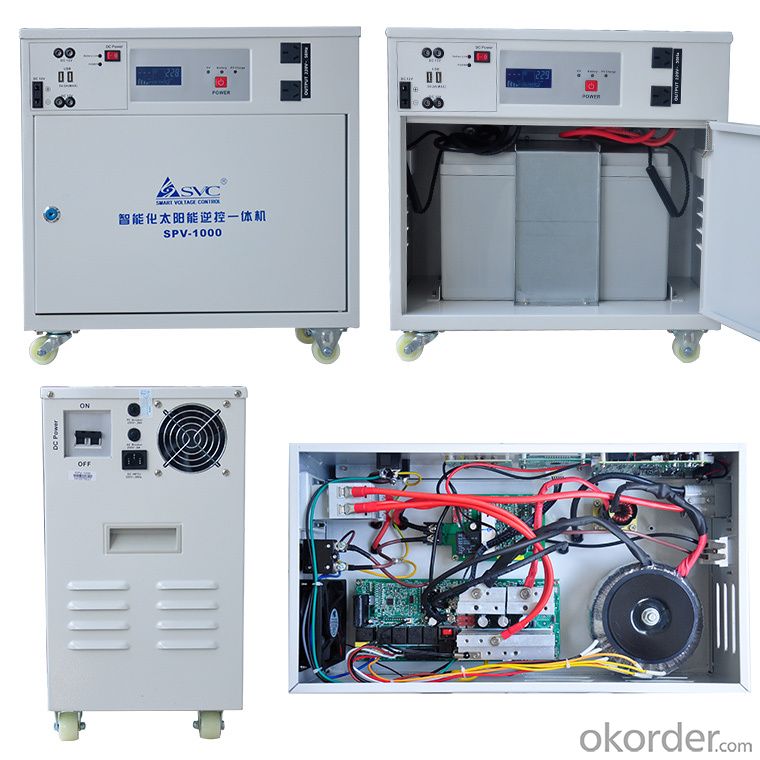
- Q: Can solar energy systems be used for powering off-grid manufacturing facilities?
- Yes, solar energy systems can be used to power off-grid manufacturing facilities. Solar panels can generate electricity from sunlight, which can then be used to power a variety of manufacturing processes and equipment. By installing a solar energy system, manufacturing facilities can reduce their reliance on traditional grid electricity and operate independently in remote or off-grid locations. This can lead to cost savings, environmental benefits, and increased sustainability for the manufacturing industry.
- Q: Is it possible to store excess solar energy for later use?
- Yes, it is possible to store excess solar energy for later use. This can be achieved by using batteries to store the energy generated by solar panels during periods of sunlight, which can then be used during times when there is no sunlight or when there is a higher energy demand.
- Q: Are there any tax credits available for installing a solar energy system?
- Yes, there are tax credits available for installing a solar energy system. The federal government offers a Solar Investment Tax Credit (ITC) that allows homeowners and businesses to deduct a percentage of the system's cost from their taxes. Additionally, some states and local governments may also offer their own tax incentives for solar installations.
- Q: What are the advantages of using solar energy systems?
- There are several advantages of using solar energy systems. Firstly, solar energy is a renewable and abundant source of power, meaning it will never run out and can be harnessed anywhere in the world. Additionally, using solar energy helps to reduce greenhouse gas emissions and combat climate change, as it produces no harmful pollutants during operation. Solar energy systems also provide energy independence, allowing individuals and communities to generate their own power and reduce reliance on traditional energy sources. Furthermore, solar energy can lead to cost savings in the long run, as it reduces electricity bills and offers potential financial incentives such as tax credits or feed-in tariffs. Lastly, solar energy systems require minimal maintenance and have a long lifespan, making them a reliable and durable option for generating clean energy.
- Q: What is the role of grounding systems in a solar energy system?
- The role of grounding systems in a solar energy system is to ensure safety by providing a path for electrical current to flow in the event of a fault or surge. It helps protect the system and its components from damage caused by lightning strikes, power surges, or electrical faults, while also mitigating the risk of electric shock for individuals working on or near the system. Grounding systems also aid in the proper functioning of protective devices, such as circuit breakers, by ensuring that they can detect and respond to electrical faults effectively.
- Q: Can solar energy systems be integrated into existing electrical systems?
- Yes, solar energy systems can be integrated into existing electrical systems. These systems can be designed to work alongside traditional electricity sources, allowing solar energy to supplement or replace grid power. Integration typically involves installing solar panels, inverters, and a connection to the existing electrical system. This integration enables the seamless use of solar power and helps reduce reliance on fossil fuels.
- Q: What are the advantages of using solar energy?
- Some advantages of using solar energy include: 1. Renewable and sustainable: Solar energy is derived from the sun, which is an abundant and inexhaustible source. It provides a long-term solution to meet our energy needs without depleting natural resources. 2. Environmentally friendly: Solar energy production is clean and does not emit greenhouse gases or other harmful pollutants that contribute to air pollution, climate change, or health issues. It helps reduce our carbon footprint and combat global warming. 3. Cost-effective in the long run: Although installing solar panels can be initially expensive, solar energy can save money in the long term. Once installed, solar power generates electricity at no additional cost, reducing or even eliminating monthly utility bills. It also offers a hedge against rising energy prices. 4. Energy independence: Solar energy allows individuals and businesses to become self-sufficient in their electricity production. This reduces reliance on traditional energy sources and volatile international energy markets, providing greater control and stability. 5. Low maintenance and silent operation: Solar panels require minimal maintenance and have a long lifespan. They do not produce any noise while converting sunlight into usable energy, making them suitable for residential areas. 6. Job creation and economic growth: The solar industry creates numerous job opportunities, from manufacturing and installation to maintenance and research. Investing in solar energy can stimulate local economies and contribute to sustainable economic growth. 7. Versatility and scalability: Solar energy can be harnessed in various ways, from small-scale residential installations to large-scale solar farms. It can be integrated into existing infrastructures, such as rooftops and buildings, or utilized for off-grid applications in remote areas. 8. Resilience and reliability: Solar energy systems are decentralized, meaning they can function independently or in conjunction with the grid. This enhances energy security, especially during natural disasters or power outages, as solar-powered systems can continue to provide electricity. In conclusion, solar energy offers numerous advantages, including sustainability, environmental friendliness, cost savings, energy independence, low maintenance, job creation, versatility, and resilience.
- Q: Can solar energy systems be used in areas with limited access to the grid?
- Yes, solar energy systems can be used in areas with limited access to the grid. Solar energy systems, such as solar panels, can generate electricity even in remote or off-grid locations. These systems can provide a reliable and sustainable source of energy, reducing dependence on traditional grid infrastructure.
- Q: Can solar energy systems be used for powering telecommunications networks?
- Yes, solar energy systems can be used to power telecommunications networks. Solar panels can generate electricity from sunlight, which can be stored in batteries or used directly to power telecom equipment. This renewable energy source is particularly suitable for remote or off-grid locations where it may be costly or impractical to connect to the electrical grid. Additionally, solar energy systems can help reduce operational costs and carbon footprint associated with traditional power sources.
- Q: Can solar energy systems be used for powering airports?
- Yes, solar energy systems can be used for powering airports. Solar panels can be installed on the roofs of airport buildings or on nearby ground areas to generate electricity. This renewable energy source can help reduce the carbon footprint of airports and provide a sustainable power solution. Additionally, solar energy systems can also be used to power auxiliary equipment such as runway lights and navigation aids, making airports more energy-efficient.
Send your message to us
Huawei Solar Energy Systems - All-in-One 480W Pure Sine Wave AC/DC Output LCD/LED 12V/24V Solar Power System
- Loading Port:
- China main port
- Payment Terms:
- TT OR LC
- Min Order Qty:
- 20 carton
- Supply Capability:
- 10000 carton/month
OKorder Service Pledge
OKorder Financial Service
Similar products
Hot products
Hot Searches
Related keywords
